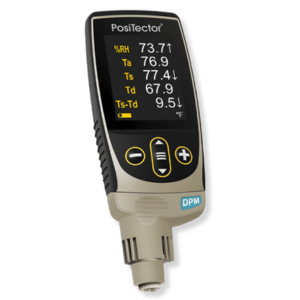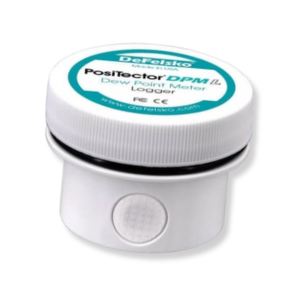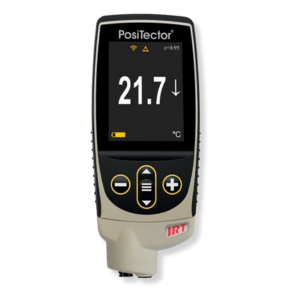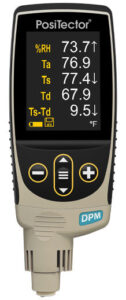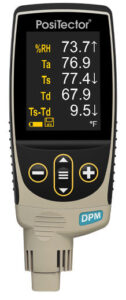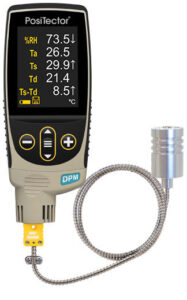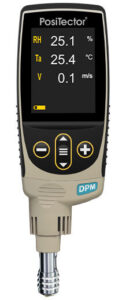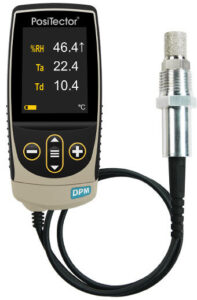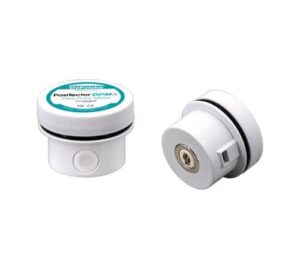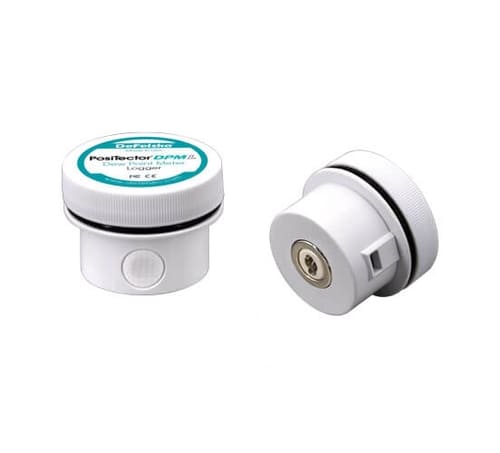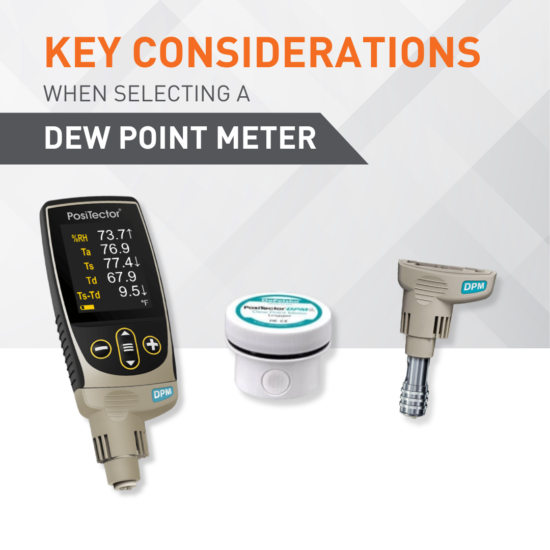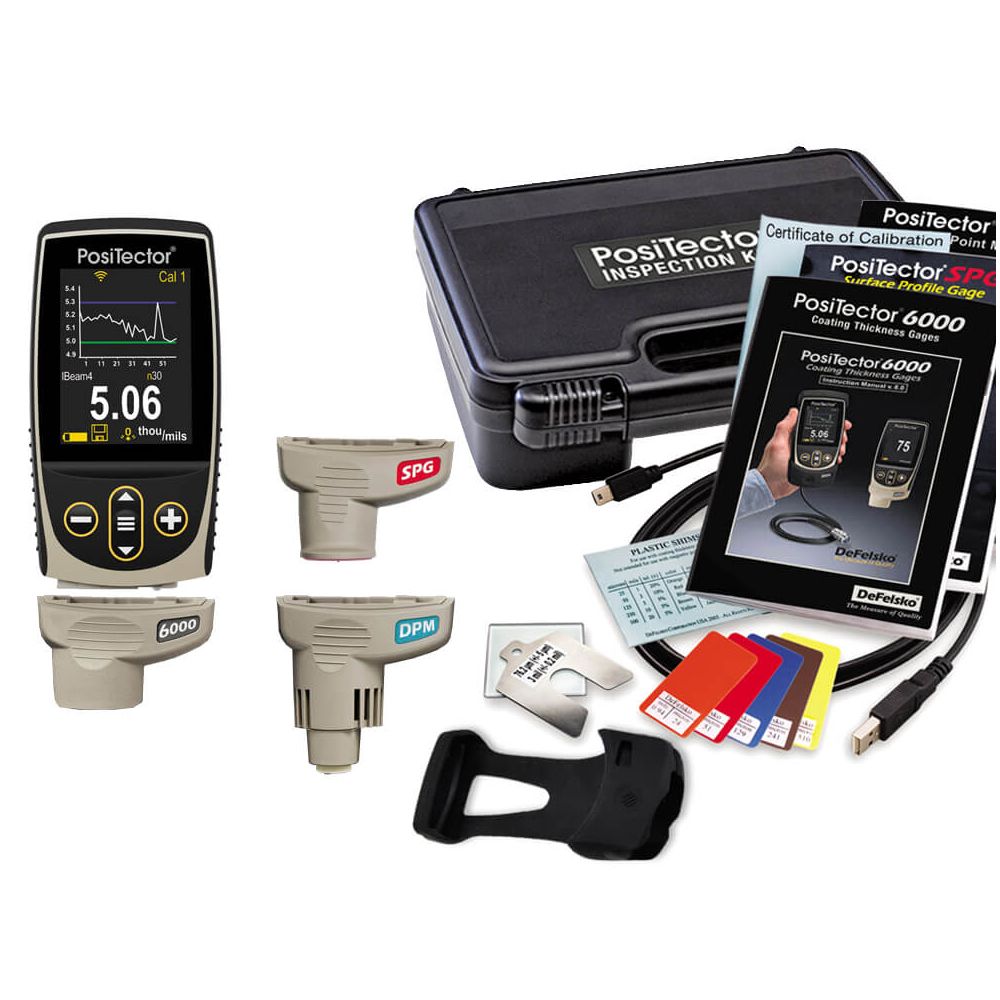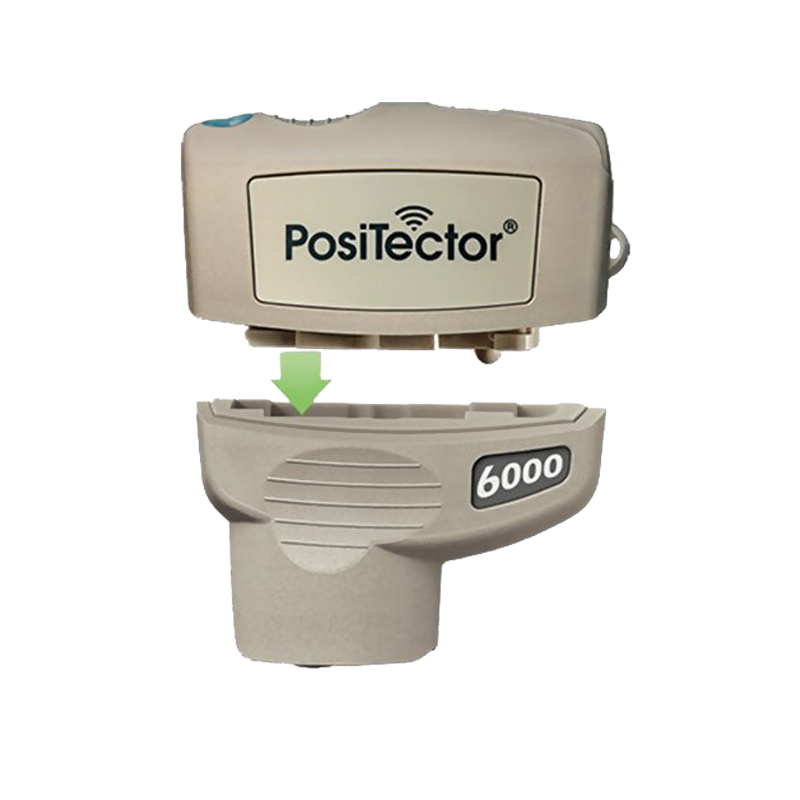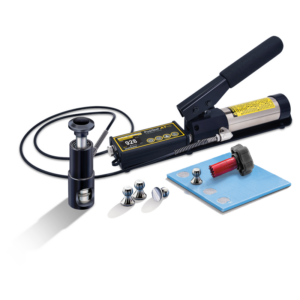What is a Dew Point Meter?
A Dew Point Meter is a crucial tool for paint and coating applicators, measuring and recording key climatic conditions: relative humidity (%RH), air temperature, surface temperature, dew point temperature, the critical Delta T (difference between surface and dew point temperatures), and even wet bulb temperatures.
By monitoring and recording these factors with a handheld, portable Dew Point Meter throughout surface preparation, application, and curing, you can guarantee optimal environmental conditions. This significantly reduces the risk of costly rework and premature coating failure, saving you time and money in the long run.
How is Relative Humidity (%RH) measured?
Relative Humidity (RH) is a critical factor in paint and coating success, affecting solvent evaporation. High RH can slow down drying, potentially leading to defects.
Traditional Methods: The Sling Psychrometer
Previously, measuring RH involved a sling psychrometer (whirling hygrometer). This tool uses two thermometers: a dry bulb and a wet bulb wrapped in a wet sock. Whirling it for 90 seconds cools the wet bulb due to evaporation, creating a temperature difference. This difference, along with dry bulb temperature, is then referenced in psychometric charts for RH. Complex and time-consuming!
Modern Measurements: Electronic Dew Point Meters
Enter the PosiTector DPM Dew Point Meter, a game-changer for humidity and temperature measurement. These multi-functional tools provide instantaneous and continuous readings of:
- Relative Humidity (%RH)
- Air Temperature
- Surface Temperature
- Dew Point Temperature
This eliminates the need for complex calculations and human error associated with sling psychrometers and lookup tables.
How is dew point measured?
Understanding Dew Point: The Key to Optimal Coating Performance
Dew Point is the crucial temperature where air becomes saturated and moisture condenses on a surface. It depends on both air temperature and relative humidity (RH). In simpler terms, it’s the temperature you need to cool air to for condensation to occur.
For freshly blasted steel, even a thin, invisible layer of moisture trapped between the coating and the steel can cause flash rust and lead to premature coating failure. To prevent this disaster, ISO 8502-4 and SSPC standards recommend keeping the surface temperature at least 5°F (3°C) above the dew point during the three critical stages of painting: surface preparation, application, and curing.
Traditional Methods: Sling Psychrometer and Chilled Mirror Hygrometers
Traditionally, dew point calculation involved a sling psychrometer and complex charts or calculators. These methods were prone to errors, couldn’t monitor continuously, and lacked data storage.
Chilled mirror hygrometers used a chilled mirror, light beam, and light detector to measure dew point. As the air is cooled, dew would form on the mirror, blocking the light, and indicating that the air has reached the dew point. The overall bulk, fragility, and cost made them impractical for field use in steel structure painting.
The Rise of the Digital Dew Point Meter
Modern dew point meters like the PosiTector DPM eliminate the complexities of previous methods. They use high-precision sensors to measure surface temperature and relative humidity, instantly calculating dew point. The most practical models include a surface temperature probe to display the all-important delta T: the difference between surface and dew point temperatures. This delta T value is critical for ensuring proper coating adhesion and longevity.
 My Account
My Account

